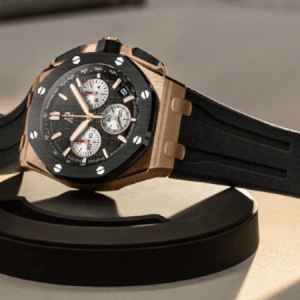Diving watches, just like diving, are not for everyone. However, if World Oceans Day gets you thinking about getting a dive watch for the weekends or your diving certification, it’s a good idea to think about a few fundamental points to help you find the true practical watch tools.
200m is Enough

Recreational diving outfits train divers for a maximum depth of 30-40 meters, according to those who have completed diving certification. If you want to go much farther, you must complete highly specialized, non-casual training.
Except for a few exceptional divers, 200 meters of water resistance is more than enough. Anything beyond that is purely for show aboard the diving boat.
ISO 6425 is Only A Guideline, Not A Rule

ISO 6425 is a diving watch standard by the International Organization for Standardization. It specifies a set of characteristics and design aspects that should make a watch acceptable for diving, as well as how the watch may be labelled by the maker, just like any other standard.
If you have a dive watch that doesn’t meet the current spec, such as one that doesn’t have a luminous pip at the zero point on the elapsed time scale or one that doesn’t have a luminous element for each 5-minute marker, that doesn’t mean it can’t be used for diving or that it wouldn’t be a good backup for a dive computer. The specification should be comprehensive and open to change, not flawless.
Versatility

Your dive watch doesn’t have to be a massive chunk of steel that only functions when you’re wearing a wetsuit and surrounded by an ocean’s worth of open space. Sure, a hardcore and extra toolish diving watch might be a lot of fun, but all you need is a watch that meets a very manageable set of requirements that can be your everyday watch.
The Bezel Grip

You need to utilize the bezel for more than just timing a pizza delivery if you’re buying a dive watch with the aim of diving with it. The problem is that many bezels are not meant to be gripped well when wet or wearing gloves.
Sure, you can set the bezel when both your hand and the watch are dry, such as aboard a diving boat, but what about a dive that demands a long surface swim, or if you need to rotate the bezel at depth to monitor something other than bottom time.
Lume Legibility

The ideal lume lights strongly and for an extended period when you’re not diving. This circumstance is changed by diving. If you require your lume underwater, you are either diving in murky/dark water or on a night dive. You should bring a flashlight with you in any case.
As a result, underwater lifespan is less of a concern because you can quickly charge your lume with a flashlight, and most dives are between 30 and 60 minutes long. The most important factor about lume in your dive watch is legibility.
The Strap

Most dive watches come with an everyday strap, whether a bracelet or some other. Some come with a second diving option, while others have a dive extension in the bracelet’s clasp. Depending on where you dive and what you wear as an exposure layer, the utility of these methods will vary substantially.
You might be able to flip open that extension and slide your dive watch over the sleeve of a thin wetsuit if you’re diving in warm water. Alternatively, the water may be warm enough that you won’t require gloves, allowing the watch to remain in its natural position on your wrist.
Suppose you’re diving in cooler water or prefer the safety and warmth of gloves. In that case, you’ll need a solution with more extension, whether it’s a long rubber strap, a bracelet with a fantastic extension system like the Tudor Pelagos, or even an extra strap wrapped around your drysuit’s forearm as an extension.
So, that are a few points that you should consider before buying a dive watch. For more information about our dive watch collection, visit The Time Place boutique.





